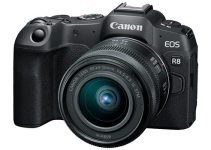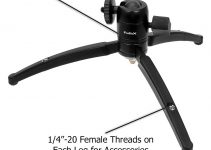Spotting more than one production camera on a small movie or music video set is very common nowadays. The access to affordable cameras is going wider constantly as the tools are getting cheaper, more advanced and inexpensive than ever before. It’s not a precedent for many filmmakers anymore to own two or three (or even more) cameras at the same time using them simultaneously in multiple productions.
However, a multicam set up can be still tricky and challenging for many. Shooting with more than one camera requires additional crew, skills and know-how. At the same time, a multi camera shoot can add more value to your work and your final product, especially when the process is executed correctly and when a lot of pre-planning is involved. Here are some useful tips and tricks that will help you to pull off any muticam shoot by following some simple rules.
When planning a muticam shoot the first things to consider are the cameras that you are going to use, the placement of each one on set, the composition and lighting. You don’t need the most expensive cameras for your multicam shoot as long as they are all the same. Thus, you will be able to match them flawlessly later in post.
However, you should double-check their settings in advance before the actual shooting starts and make sure that they are all the same on every camera. You don’t want to find in the middle of the shoot that one or all of your cameras are adjusted to different frame rates or have different white balance settings, for instance. Even the smallest mismatching of cameras’ settings can cause a lot of troubles in post, so be extremely cautious on that side.
You also should carefully plan and optimise the coverage that you are about to get. You should avoid doubling it up by all means. For instance, the primary coverage for a typical dialogue scene should consist of close-ups of your actors and a medium or master shot of the scene in case you are using three cameras. The right coordination among you and your DPs is crucial in this type of shooting situations and shouldn’t be underrated.
Here is another great example how a multicam project should be approached and executed.
Furthermore, the way you and your DPs should deal with your lighting set up also should be different from what you may be used to in single camera situations. As-a-rule-of-thumb, you should light the scene in a way that looks homogeneous and evenly lit from all camera angles.
The easiest way to do that is by placing your lights and rigging them to a ceiling or grid so that they won’t get in the frame. Lighting this way will be definitely more time-consuming, but it will pay off in the end. Otherwise, if you place the lights on stands around your actors, you’ll inevitably stumble upon some issues. This set up might be ok for a single camera shoot. However, it won’t work on a multicam shoot in most of the time.
In many situations shooting a multicam will save you a lot of time, money and efforts and will add more production value to your final product. However, you should be really careful with the pre-planning, composition and lighting. A multicam shoot is not suitable for every project, yet If you follow these simple rules, you will be able to to move quickly and efficiently on set by achieving some great results in the end.
[via Premium Beat]
Disclaimer: As an Amazon Associate partner and participant in B&H and Adorama Affiliate programmes, we earn a small comission from each purchase made through the affiliate links listed above at no additional cost to you.



